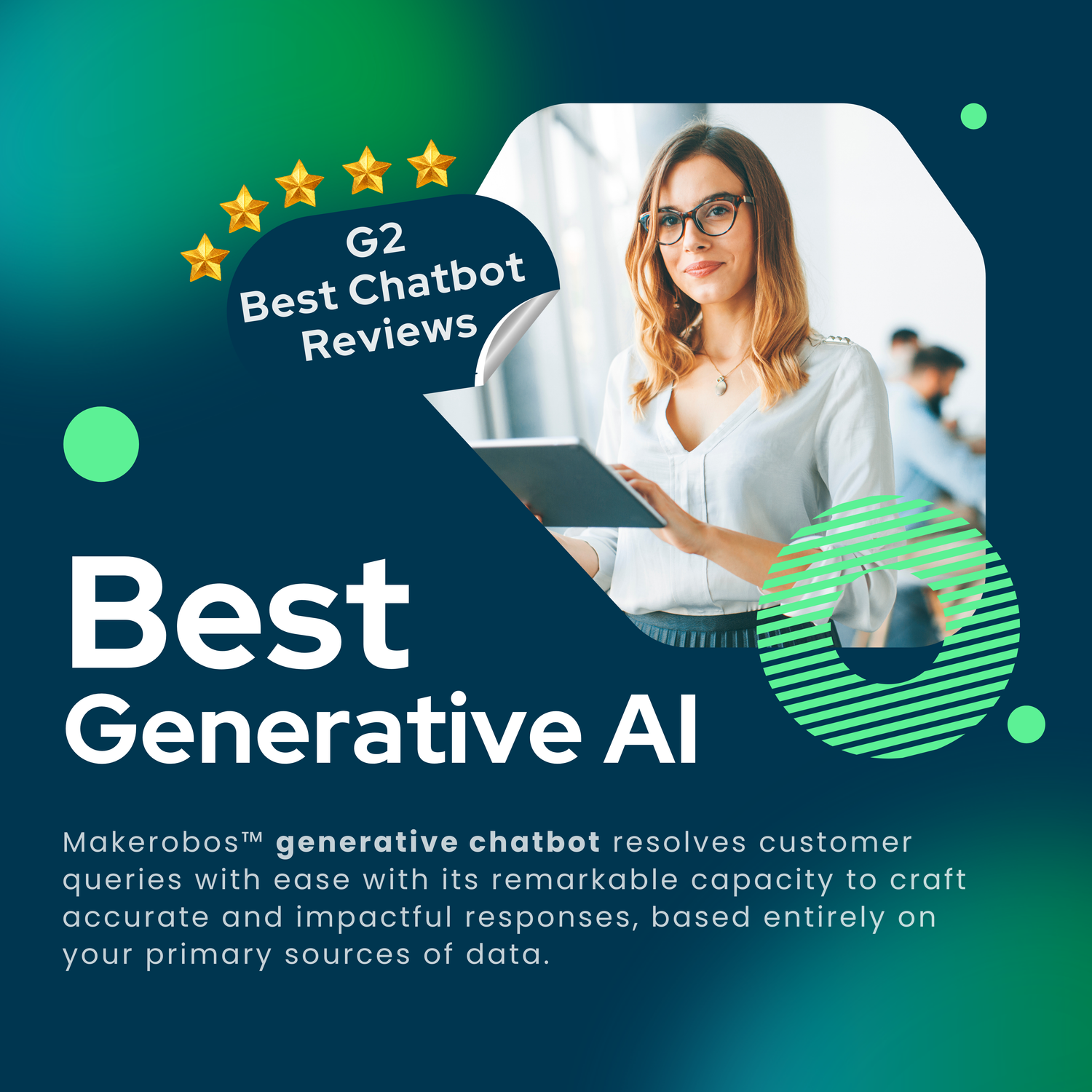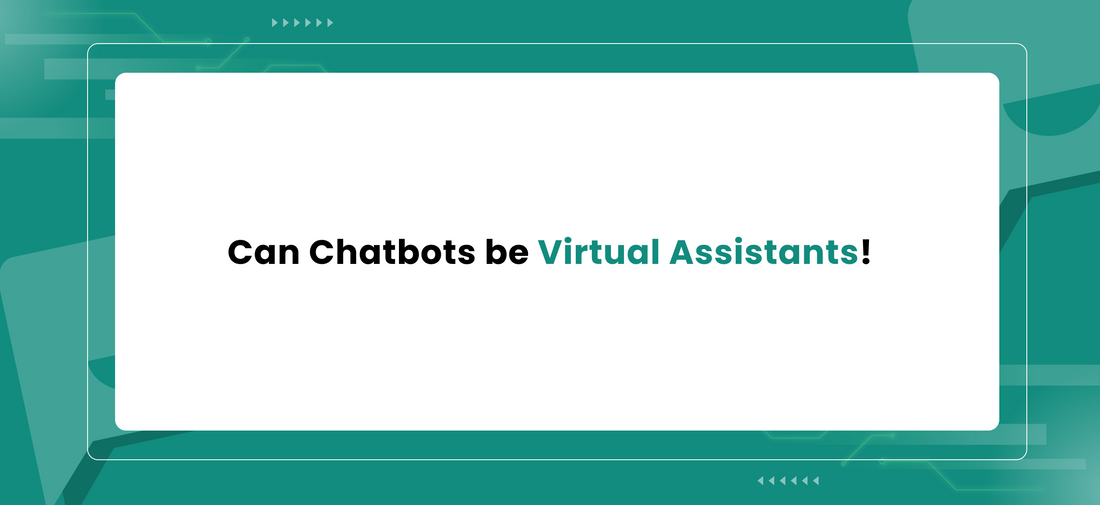“If you judge a fish by its ability to climb a tree and bird by its ability to swim. Then you will end up with disappointment only.”
-Albert Einstein
This quote resembles a lot with how sometimes users get disappointed with the response of a chatbot or a virtual assistant. Some users assume that chatbot and virtual assistant are similar tools, and expect a chatbot to answer like a virtual assistant, or vice-versa. while it isn’t possible.
Related must-reads:
50+ Perfect System Prompts for Creating Generative AI Chatbot
The Rise of Chatbots and Their Role in the Future of Business
Best AI Chatbots of 2024 : A Comprehensive Guide to the Top Platforms
A chatbot can help in providing better ROI and interactive customer support for businesses. It can’t work as a virtual assistant that offers customized assistant to every individual user’s commands or questions.
Unawareness about the functional differences between a virtual assistant and a chatbot among users sometimes causes businesses to lose leads also.
How does this misunderstanding cause problems for businesses?
If you ask a virtual assistant on your smartphone about the weather, then it will instantly fetch the data from the reliable sources and answer your query. But if you ask the same to a chatbot, then it will keep asking you to recheck your command.
Similarly, virtual assistants also pose some limitations. Like if you ask your virtual assistant to book an appointment for a test drive of a JEEP, then it won’t be able to assist you with it. While “Karl Chatbot” of JeepIndia.com can do in just a few clicks.
It is quite reasonable for users to be unable to understand the difference between both as they have an identical appearance. But sometimes these types of experiences make users think that chatbots are not smart and unhelpful for them.
47% of organizations will use chatbots for customer care, and 40% will deploy virtual assistants.
Well, to understand the differences between a virtual assistant and a chatbot, you will first need to know more about chatbot and virtual assistant.
What is Chatbot?
A Chatbot is conversational customer support, sales, and marketing tool. It is designed to interact with users more engagingly than traditional web-form pages. The primary purpose of a chatbot is to help businesses to boost their engagements and lead conversion rate. It also helps in decreasing the laborious workload of companies, which enables their employers to work with better efficiency and deliver more productive results.
Chatbots are well qualified to deliver higher ROI to businesses by providing interactive service experience to their customers. They can perform tasks like booking an appointment, resolving product or service related queries, building a better relationship with digital customers, etc. in just a few minutes without a need for human interaction.
What is a Virtual Assistant?
Virtual Assistant is a digital software that can understand human voice commands and assist them accordingly. The workability of a virtual assistant has its focus on facilitating help to an individual.
A few examples of Virtual Assistants are Amazon’s Alexa, Apple’s Siri, Google’s Assistant, and Microsoft’s Cortona.
Google Assistant:
Google assistant is an AI-Based virtual assistant owned by Google Inc.; it is the most advanced virtual assistant in the world. It can engage in a two-way conversation using Google’s natural language processing algorithm, which beliefs to be the most advanced NLP algorithm.
Amazon Alexa:
Amazon Alexa is a virtual assistant owned by Amazon Inc.; this virtual assistant is considered the second most powerful virtual assistant in the world after Google. It has abilities like voice interaction, music playback, making to-do lists, setting alarms. It can also stream podcasts, play audiobooks, and provide weather, traffic, sports, and other real-time information, such as news with just voice commands.
Can Virtual Assistant Also Help Businesses?
Some website uses Virtual Assistant in place of a chatbot for growing their business. A Virtual Assistant may turn out to be useful for them in the context of decreasing workload or delivering customized user experience to every customer. It can also be helpful for managers in enterprises to get help with virtual assistants in their day to day tasks. But higher ROI or sale can’t be promised with it as it doesn’t focus on increasing sales or boosting ROI.
Core differences between Virtual Assistant and Chatbot: Learning Ability and Endpoints
The working design of chatbot allows it to perform monotonous tasks very speedily. Although chatbots learn with continuous training and analysis. But they don’t change their responses person to person. Also, the endpoints of a chatbot are limited to the company or enterprise it is working.
Whereas Virtual Assistant can also perform monotonous tasks with equal efficiency as the chatbot can do, but changes its answer according to its user’s customization. The learning course of a virtual assistant is focused on becoming better for an individual user. Unlike chatbot, it doesn’t pose any help to another user apart from its primary user. The virtual assistant also has a higher number of endpoints than chatbots. It can make payments from your e-wallet, book a cab or order food online, search for specific information, etc. all via voice commands.
Emotional understanding
Another difference between both these tools is that a virtual assistant can update its responses by continuously learning the emotional nature of the user. In contrast, chatbot’s learning ability doesn’t focus on learning the emotional nature of an individual user.
NLP and Orientation
The natural language processing ability of a virtual assistant allows it to answer questions based on its subjects as well as generic queries. Similarly, a chatbot can also work on NLP but is limited to answer questions based on their domain only


